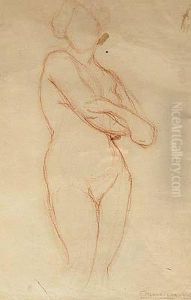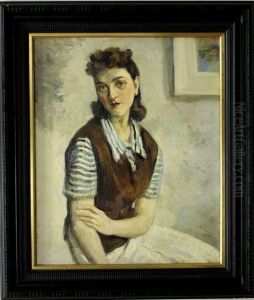Frederico Masriera Vila Paintings
Frederico Masriera Vila was a notable figure in the Catalan art scene of the late 19th century. Born in 1842, he was part of the Masriera family, which played a significant role in the cultural and artistic development of Barcelona, Spain. The Masriera family was involved in various artistic pursuits, including jewelry design, painting, and theatrical set design, which influenced the cultural landscape of Catalonia during that period. Frederico, along with his brother Josep Masriera, contributed to this rich artistic tradition, leaving a lasting legacy in the region's art history.
Masriera Vila's career was marked by his dedication to painting and his involvement in the decorative arts, particularly in the area of jewelry design, where he excelled in incorporating Modernisme (the Catalan version of Art Nouveau) elements into his creations. His work in the decorative arts was characterized by intricate designs and the use of precious metals and stones, which reflected the aesthetic preferences of the time and contributed to the international recognition of Catalan Modernisme.
In addition to his contributions to the decorative arts, Frederico Masriera Vila was also known for his landscape paintings, which captured the beauty of the Catalan countryside and the Mediterranean light. His paintings are celebrated for their attention to detail, vibrant colors, and the ability to evoke the atmosphere of the locations he depicted. Through his artworks, Masriera Vila played a role in promoting Catalan identity and culture during a period of significant cultural and political development in the region.
Frederico Masriera Vila's death in 1902 marked the end of a significant chapter in the history of Catalan art. His contributions, along with those of his family, have been remembered and celebrated in various exhibitions and retrospectives, highlighting the importance of the Masriera family in the development of Modernisme and their impact on the artistic heritage of Catalonia. Frederico's legacy continues to be appreciated by art historians and collectors, who recognize his work as an integral part of the rich tapestry of Catalan art history.

